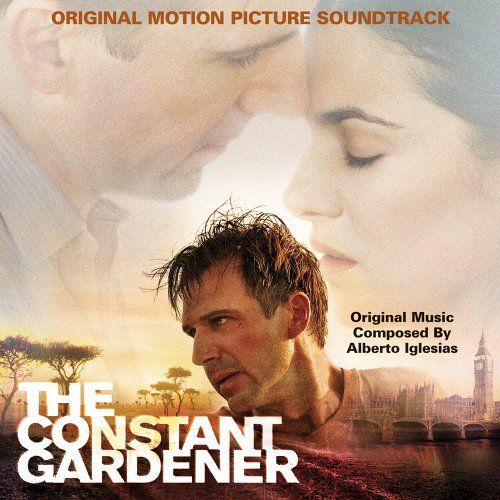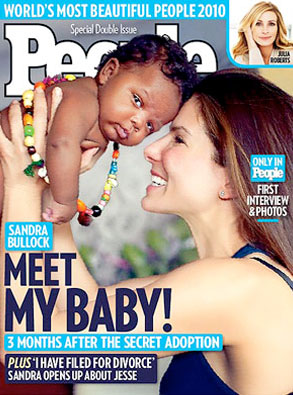Moral and Aesthetic Idealism among Whites: The Constant Gardener
There seems to be a certain moral fervor in many of us Whites. It’s apparent among the Puritans and some of their noisier descendants, the abolitionists of the 19th century. They waged Holy War on behalf of righteousness (see also here), often on against their own people on behalf of people quite a bit unlike themselves.
I was reminded of that while watching The Constant Gardener, a film starring Ralph Fiennes as Justin Quayle, a minor British diplomat posted to Kenya who is married to crusading humanitarian activist Tessa, played by Rachel Weisz. We see her originally holding forth in a room crowded with journalists blaming the British government for what’s going on in Africa, her rhetoric so extreme that the room quickly empties. Although Tessa gets married to the White diplomat, her heart is in all things African. We see her flirting with an African doctor, openly consorting with him at a high-level cocktail party, then opting to have his baby in a hospital swarming with poor Africans, except for the White nurses and doctors. The birth of the baby happens as though it is part of the natural order of things—the husband is just fine with it, acting as if there’s nothing to notice, while the father of the baby looks on proudly. Tessa’s only thought is to help the poor African girl in the next room.
Oddly, we are given only brief glimpses of the baby—as if the director didn’t think the audience would be quite ready to relate to the child of a married White woman and her very African lover—although, it must be said, we now have a president who was conceived under broadly similar conditions.
But the real story here is the psychological— the emascululation of the husband and the wife’s attraction to all things African, including her lover. Evolutionary psychologists have made a good case that humans have brain modules designed to safeguard our interests in the mating game. Men are designed to attempt to punish cheating wives and to make sure that the children they raise are biologically theirs. One can’t help feeling the tension in the scene with the miscegenated baby. We expect at least that Justin would feel anger and betrayal, perhaps get a divorce and somehow find a way to get this experience behind him.
But he does nothing. And later she humiliates him in front of her African lover, berating him for using a pesticide. The African lover gives sage advice to the husband—to accept her moral vision — a moral vision that extends even to insects. White men must understand that they would do well to heed the advice of a wise African.
For Justin, to get upset about his wife’s behavior would oppose his own idealism. After all, he was immediately attracted to her moral fervor from the beginning. He loves her independence and her moral intensity.
But Justin isn’t the only one whose behavior flies in the face of nature. All things equal, we are designed to mate with people like ourselves because doing so means that spouses will be more compatible and more closely related to their children. Of course, there are other factors in the mating game. No one is surprised when someone marries a wealthy person of a different race. But that’s not what’s going on here. Tess is attracted to her African lover because he is everything she and her husband are not. Her attraction to her Black lover is part of her love of all things African and rejection of all things English.
It is attraction to a non-White moral and aesthetic ideal. Whites are at the root of all evil. The White-owned drug companies are testing a new anti-tuberculosis drug despite harmful side effects on Africans. There is collusion with White British diplomats who know full well what’s going on and do nothing in their daily lives to end the suffering they see all around them.
She sees nothing but beauty in Africans. When she dies, she wants to be buried so that her remains are in contact with the African soil, not encased in a concrete tomb. We see her embracing African children, seeing them as supremely beautiful. She gives birth in an African hospital rather than a “proper clinic,” as a White character describes it. She must experience what the Africans experience.
Tessa wears her African moral and aesthetic ideal as a badge. It is the beginning and end of her identity. She wears her badge despite the miserable living conditions of the Africans—the garbage strewn everywhere, the open sewers—all presumably the fault of Western greed and corruption. I doubt one could talk with her for five minutes without finding her returning to the themes of her obsession. Nothing else matters. One would think that when her baby was born she would think of little else, but her thoughts are on her campaign to uncover corruption by the drug company. She has no compunctions about offering sex and then potentially ruining the career of a (White) diplomat in order to obtain information that would help end what the drug companies are doing to the Africans.
So a theme is moral idealism and its ability to supercede our most basic evolutionarily adaptive tendencies—an academic interest of mine (e.g., here). Tessa and Justin are exemplars of White moral and aesthetic idealism, the commitment of so many of us to moral and aesthetic visions (one might even say, imperatives) fundamentally at odds with some of the deeper layers of our evolved psychology.
This moral idealism can be seen in what Christopher Donovan calls the “Amy Biehl Syndrome” after Amy Biehl, the American anti-Apartheid activist who was murdered by a mob of South Africans. We see it in Rachel Corrie, the American pro-Palestinian activist who was brutally murdered by Israeli bulldozer. It is a tendency quite common among Whites, noticeable particularly in the Puritan strain of American culture. It’s pervasive among Whites in the academic world.
This altruism on behalf of the other is often accompanied by punishment of one’s own people—the phenomenon of altruistic punishment. They will move heaven and earth to destroy their own people on behalf of a moral ideal. In the current cultural environment, people like Tessa would be expected to favor the entire program of the multicultural left as a moral imperative—no sacrifice would be too great.
What to do? One could remind such a person of the moral implications of inflicting the White populations of the West with multiculturalism — especially when support for multiculturalism and support for their own demographic and political eclipse have never been majority views among Whites. What is needed is to pay more attention to the morality of infringing on the legitimate rights and interests of the White majority. Everyone has rights and everyone has interests. The interests and rights of Whites as a majority are no less morally legitimate than anyone else’s rights. Whites must jettison the ideal of moral universalism and ask what is good for the future of Whites.
But such a line of argument will have little impact on people so deeply committed to moral universalism. Moral universalists have a long track record of having little concern for those close to home while they turn their eyes far afield. As David Morris notes,
This perverse attitude grew from the Victorian middle class influenced by evangelical Christianity, which believed it had a duty to ‘save’ unchristian natives. It became a preference over the British working class which endures today. Characteristic of this is Mrs Jellyby in Dickens’s Bleak House, whose eyes ‘had a curious habit of seeming to look a long way off, as if they could see nothing nearer than Africa’. Like the elites she neglected those around her, including notoriously her own children.
Moral idealism runs deep among Whites—indeed, my view is that it is part of our evolutionary psychology (see here, p. 19ff). In any case, appeals to the morality of particularism would not cure the aesthetic deformation that is at the heart of the problem. Such people’s gut feelings see nothing but beauty, psychological and physical, in even the most backward Third Worlder. They are implicitly anti-White. (Actually, it would be interesting to have her take an Implicit Attitudes Test. Findings indicate around 75-80% of Whites take longer to associate adjectives like ‘intelligent’ and other positive attributes to Black than to Whites. [Reviewed here.] I suspect Tessa would be in the minority of Whites for whom this is not the case.)
A certain amount of contemporary moral and aesthetic idealism among Whites must be attributed to the media deluge of recent decades. Such tendencies may indeed be part of the biology of individualism, but they are surely exacerbated by non-stop images such as contained in The Constant Gardener—doubtlessly accounting for the deluge of positive movie reviews. Adopting non-White children and sponsoring poor and oppressed immigrants to the West is nothing if not fashionable. Again, the power of the media to intensify or minimize our natural tendencies. Wearing badges identifying one as an upholder of contemporary moral conventions is an excellent way to win the respect and adulation of others.
After the revolution, the media will be controlled to depict characters like Tessa as deranged, naïve individuals who inevitably bring destruction to themselves and their people. Dystopic, even dangerous futures, such as depicted in Alex Kurtagic’s Mister, would be discussed as the inevitable consequence of such attitudes—predictable because such sentiments are vanishingly rare among non-Whites who would then have political power over Whites. As repeated endlessly here, it is the ultimate folly for an ethnic group to voluntarily cede power to other ethnic groups, especially when these non-White groups hold historical grudges against Whites. Moral and aesthetic universalism would be seen as valuable traits in the small, homogeneous White societies they evolved in because they break down the primitive ties of extended kinship and stifling collectivism that form the basis of social behavior in the rest of the world. However, they are dangerous in the modern world when they result in altruism toward people not only very unlike us, but unlike us in ways that ensure a very dangerous road ahead when Whites become minorities in the societies they created.
Everything we know about psychology shows that our rational faculties can suppress our evolved tendencies. Moral and aesthetic universalism are no different as biological tendencies among Whites that need to be controlled in order to produce adaptive behavior—no different, say, from controlling ethnocentrism or our evolved mating psychology. (A great deal of psychological research [see above, p. 1022] shows that White people do in fact engage in effortful control of ethnocentrism, usually to protect their reputation in politically correct environments like universities.)
These biological tendencies can be controlled. And the fact that such traits are hardly universal among Whites will make it all the easier. But first we have to obtain a media presence where we can clearly and articulately make the argument for moral and aesthetic particularism as a rational necessity in the modern world.









Comments are closed.